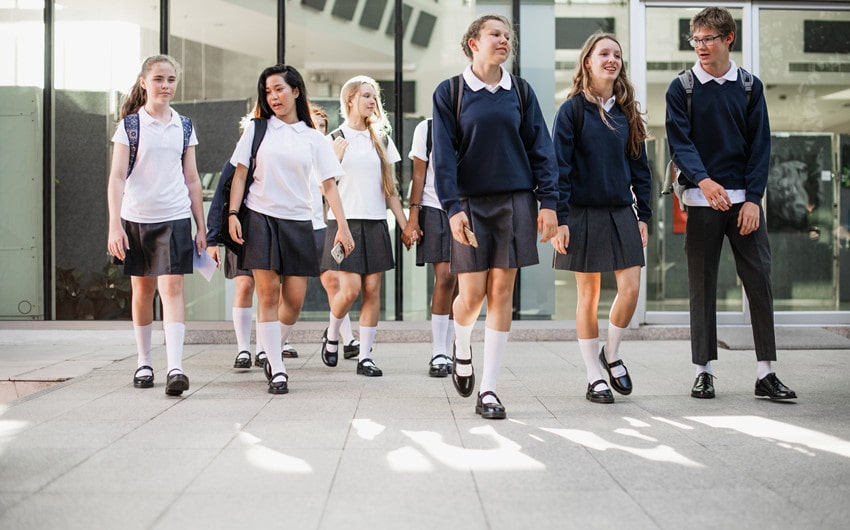10 Honest Reasons Why School Uniforms Are Bad for Students Today
School uniforms are often marketed as the great equalizer—a way to minimize distractions, discourage bullying, and boost academic focus. But dig a little deeper, and you’ll start to see cracks in the polished image. The truth is, there are many reasons why school uniforms are bad, especially when you take into account the real-life experiences of students. Uniforms may look tidy in theory, but in practice, they can stifle individuality, reinforce outdated norms, and introduce a whole new set of pressures into the school environment.
If you’ve ever worn a uniform yourself, or if you’re a parent navigating this issue with your child, you might already sense that something doesn’t quite add up. Let’s explore the less-talked-about side of school dress codes and unpack ten honest, human-centered reasons why school uniforms may be doing more harm than good.
1. They Limit Personal Expression
One of the most compelling reasons why school uniforms are bad is that they strip away a student’s ability to express who they are. During childhood and adolescence—some of the most formative years of identity development—clothing plays a powerful role in helping kids and teens figure themselves out. Whether it’s a favorite color, a cultural statement, or a quirky accessory, your clothes are one of the first ways you learn to say, “This is me.”
Uniforms flatten that expression. Everyone in the same pants, shirts, or blazers might look neat on the outside, but inside, students can feel silenced. For those who struggle to be heard in other ways, taking away the ability to express oneself through clothing feels like erasing their voice.
2. They Can Reinforce Gender Norms
Most school uniform policies are not designed with inclusivity in mind. In fact, many of them are rigidly gendered—skirts for girls, pants for boys. For students who are transgender, nonbinary, or gender-nonconforming, this binary structure can feel not only restrictive but harmful.
Instead of offering flexibility and allowing students to choose what makes them feel most like themselves, many schools double down on enforcing traditional gender roles through clothing. Imagine being told to wear a skirt when you’re trying to assert your gender identity—or forced to wear trousers when it doesn’t reflect who you are. That daily discomfort adds up.
Uniforms should not become a battleground for identity, yet they often are. And that’s one more reason why school uniforms are bad: they don’t reflect the diversity of real student bodies, experiences, and identities.
3. They Don’t Solve Bullying—They Just Shift It
A common argument in favor of uniforms is that they reduce bullying by making everyone dress the same. But that theory oversimplifies how bullying works. Uniforms might remove one specific trigger—designer labels or flashy trends—but they don’t remove the deeper causes of peer judgment.
If someone is determined to bully, they’ll find another reason. Uniform or not, kids still get picked on for their body size, their skin color, their haircut, their shoes, their voice, or even their lunch. What’s worse, school staff may assume bullying is “less likely” in a uniformed environment and fail to catch more subtle forms of cruelty.
Instead of addressing surface-level issues like wardrobe variety, schools would be better off investing in empathy education, restorative practices, and actual conversations about kindness and inclusion.
4. They Can Be Financially Burdensome
Uniforms are often presented as cost-saving measures for families—but that’s not always how it plays out. In many schools, uniforms must be purchased through specific vendors, often at premium prices. And you can’t just buy one set. Families need several copies of each item to get through the week.
Then there’s the reality that children grow—quickly. What fits one semester might be tight or too short by the next. Add on shoes, outerwear, gym uniforms, and you’re looking at a significant ongoing cost. And unlike regular clothes, uniforms can’t always be passed down or reused outside of school.
For low-income families, this is not just an inconvenience. It’s a stressor. And when a student can’t afford the “right” uniform, they can face punishment or embarrassment, making an already difficult situation even harder.
5. They Create a Culture of Conformity
Another important reason why school uniforms are bad is that they reinforce the idea that blending in is more valuable than standing out. Uniforms promote sameness, and while that may seem harmless, it subtly trains students to prioritize conformity over creativity or independent thinking.
Schools should be environments that encourage students to explore, question, and think differently. But when even your shirt color is decided for you, it’s easy to internalize the message: follow the rules, stay quiet, and don’t disrupt the order.
Conformity might make it easier to manage a classroom, but it’s not the same as cultivating respect, leadership, or original thought. Those things come from letting students be who they are—not telling them who they should look like.
6. They Often Prioritize Image Over Comfort
Uniforms are designed to create a polished image, not to support the physical comfort or needs of every student. Think about itchy fabric, stiff collars, or skirts that make movement difficult. Some uniforms are too hot in summer, too cold in winter, or simply not made with different body types in mind.
When students feel physically uncomfortable, they can’t focus. They fidget, they tune out, or they become self-conscious. In the effort to make students “look professional,” schools sometimes forget that learning happens best when students feel safe, relaxed, and free to move.
Clothing should be functional and supportive—not just symbolic. And when students are distracted by discomfort, it undermines the very academic success uniforms are supposed to promote.
7. They Disproportionately Affect Marginalized Students
Dress code enforcement is rarely equal. Students of color—particularly Black girls—are often policed more harshly for minor violations. Hair, head coverings, and even how a uniform “fits” can become a reason for discipline.
In some cases, cultural or religious attire clashes with uniform policies. A student may wear a turban, hijab, or other meaningful item, only to be told it’s “not part of the dress code.” This creates tension between cultural identity and institutional rules.
Uniforms, when rigidly enforced, can become a tool of exclusion rather than inclusion. And that makes them part of a larger issue of how schools respond to difference—with suspicion, not understanding.
8. They Add Pressure Instead of Removing It
Far from simplifying school life, uniforms can introduce a whole new layer of stress. From remembering to wear the correct shoes to making sure your shirt is tucked in just right, students spend time and energy on tiny details that have nothing to do with learning.
In many schools, uniform violations lead to detention, suspension, or being sent home. That means lost class time, added anxiety, and disciplinary records for things as minor as wearing the wrong belt. It’s not just frustrating—it’s counterproductive.
Students shouldn’t be punished for trying to dress themselves. Especially when the rules often feel arbitrary, the constant monitoring teaches compliance, not confidence.
9. They Ignore Student Voice
One of the clearest reasons why school uniforms are bad is that students rarely have a say in the matter. Uniform policies are often decided by administrators or parents, with little input from the people who actually have to wear them every day.
When students feel unheard, it affects how they engage with school as a whole. They may start to view the system as something being done to them, rather than something they’re a part of. This disconnect erodes trust and reduces motivation.
Including students in decisions about dress codes could lead to better policies—and better morale. But when their opinions are dismissed, resentment builds. And that resentment can spread far beyond clothing.
10. They Don’t Improve Academic Performance
One of the most common claims in favor of uniforms is that they lead to better academic outcomes. But the evidence simply doesn’t support that. Numerous studies show little to no correlation between wearing uniforms and higher test scores, better grades, or improved behavior.
What actually helps students succeed? Things like engaging teachers, a supportive classroom environment, access to resources, and mental health support. Uniforms, in contrast, are a superficial fix. They might make things look orderly on the outside, but they don’t touch the deeper issues that affect learning.
In fact, for students who feel uncomfortable, unseen, or restricted by their uniforms, the policy can become a barrier to engagement—not a bridge.




